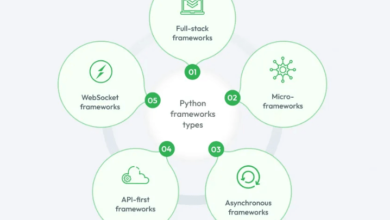
Future of Visual Testing Tools in Cross-Browser Testing
The acceleration of web application development has intensified the need for precision in rendering across diverse environments, making visual testing tools an essential component in cross-browser validation. These tools extend beyond functional verification by analyzing the graphical output of user interfaces, ensuring consistent rendering across diverse browsers, operating systems, viewport sizes, and device configurations. With advanced CSS frameworks, dynamic JavaScript rendering, and responsive layouts becoming standard, visual validation has moved from being supplementary to being integral for reliable deployment pipelines.
Evolution of Visual Testing Paradigms
Earlier quality assurance workflows relied heavily on DOM verification and functional assertions, which were often insufficient for capturing layout irregularities. Basic automation frameworks once compared static screenshots pixel by pixel; this rigid approach led to frequent false positives caused by rendering nuances in different browser engines or scaling on devices.
Modern visual testing tools now use AI-driven comparison techniques that evaluate perceptual differences. This enables context-aware analysis of alignment, spacing, typography rendering, and gradient shifts. The transition from pixel validation to perceptual validation represents a critical step toward workflows that adapt more effectively to real-world rendering conditions.
Machine learning has further refined visual baselining by distinguishing relevant changes from irrelevant variations. Object detection models trained on interface components such as navigation menus, forms, and interactive widgets now allow tools to focus on meaningful discrepancies. Semantic awareness reduces the need for manual review by filtering out changes that don’t affect usability. As a result, visual testing has become embedded into continuous integration pipelines and is now central to distributed engineering environments.
Cross-Browser Rendering Complexity
The diverse ecosystem of web browsers, powered by engines like Blink, Gecko, and WebKit, leads to differences in how rendering instructions are processed. Small differences in flexbox layout, hardware-accelerated animation, or anti-aliasing algorithm can produce inconsistencies that may arise in one browser but not another. Functional assertions generally overlook such problems since the DOM structure itself may remain valid while the presentation layer differs.
To address this challenge, visual testing tools establish cross-browser baselines that factor in rendering diversity. Instead of relying solely on DOM state comparisons, they capture rendered states under controlled conditions and evaluate them against reference baselines from stable builds. Detected differences can then be escalated for review or automatically classified using AI to separate tolerable variations from critical visual regressions. This ability to manage browser variability at scale is shaping the future of cross-browser validation.
Cloud-Native Scalability
Scaling validation across environments requires infrastructures that are elastic and reproducible. Visual testing tools are increasingly adopting cloud-native models where test suites execute in parallel across hundreds of combinations of browsers and devices. Containerized test environments standardize conditions, ensuring consistency in rendering outcomes regardless of where tests run. This eliminates the overhead of maintaining localized infrastructure while providing the elasticity to match release demands.
Containerization also isolates tests from shared dependencies, reducing flakiness and instability. With headless browser execution inside containers, validation runs at higher throughput without sacrificing reproducibility. Integration with serverless workflows allows provisioning on demand, enabling resource optimization during peak validation phases. These capabilities create a sustainable framework for scaling visual testing in continuous release environments.
Integration with Test Management Ecosystems
While visual validation ensures rendering fidelity, broader quality assurance relies on unifying visual checks with defect tracking, execution metrics, and test coverage. The integration of visual testing tools with test management tools in software testing establishes this connection. Discrepancies identified in visual runs can be logged into centralized systems, where they are tracked alongside functional and performance-related defects. Integration creates a connected workflow rather than isolated checks.
Correlating rendering differences with metadata—such as browser version, viewport dimensions, or network latency—enables faster root cause analysis. Teams gain clarity on whether a defect is consistent across environments or limited to specific conditions. This traceability strengthens release confidence and helps distributed teams maintain alignment even in environments with multiple active release branches.
AI-Enhanced Visual Baseline Management
Maintaining baselines has long been a challenge, particularly in rapid-release cycles where user interfaces evolve frequently. Manual updates to the baseline are time-consuming and lead to higher maintenance costs. AI-enhanced baseline management now addresses this issue by clustering and classifying changes automatically. Tools can suggest safe baseline updates for non-critical variations while flagging anomalies that warrant deeper inspection.
Generative models add another layer by anticipating rendering issues in upcoming builds. By analyzing historical evolution patterns, they highlight sections most likely to produce inconsistencies. This predictive dimension reduces false negatives and equips teams to focus attention where defects are most probable. Such forward-looking capabilities align visual validation with the needs of fast-moving delivery pipelines.
Key Capabilities Driving Next-Generation Visual Testing
Technological progress is transforming how visual testing is integrated into quality assurance processes.
- AI-driven Differentiation: Algorithms identify significant layout modifications from slight pixel changes, minimizing false positives.
- Cross-Environment Consistency: Validations extend across devices, browsers, and viewport sizes, ensuring rendering stability.
- Baseline Evolution: Automated baseline updates adapt to rapid UI changes without heavy maintenance overhead.
- Accessibility Metrics: Integration of color contrast, font legibility, and ARIA compliance enhances inclusivity.
- Performance Synchronization: Visual validation aligns with load times and rendering speed to measure responsiveness.
- Traceability: Direct integration with execution metadata enhances reproducibility and defect analysis.
Together, these capabilities establish visual testing as a central foundation in achieving reliability across distributed environments.
Accessibility and Internationalization Validation
Visual inconsistencies frequently amplify when applications include multilingual interfaces or accessibility needs. Scripts that are read from right to left, multi-byte character encodings, or region-specific layouts may expose alignment problems that are frequently ignored. Language-sensitive models in visual testing tools proactively detect these issues, ensuring consistent rendering across global implementations.
Accessibility considerations extend further to elements like color contrast, keyboard focus indicators, and ARIA label visibility. Increasingly, AI-driven tools evaluate these parameters alongside layout checks, embedding accessibility into the broader validation process. This supports compliance with accessibility standards while ensuring rendering precision across multiple environments.
See also: Python Frameworks for Scalable and Maintainable Testing
Performance-Integrated Visual Testing
The scope of validation is broadening to include not only fidelity but also performance metrics. Tools now align visual snapshots with telemetry, enabling engineers to link rendering states with latency or performance bottlenecks. For example, while content may visually load correctly, delayed above-the-fold rendering could still degrade usability. Integrating performance indicators into visual validation ensures both fidelity and responsiveness are measured together.
Edge-computing models extend integration further by running validations closer to the end-user environment, capturing network-driven variability. By combining visual validation with performance profiling, tools evolve from being static validators into multi-dimensional quality frameworks.
Security Considerations in Visual Testing
Browser security threats increasingly exploit rendering behaviors. Malicious manipulation of CSS or SVG can mislead users by masking fraudulent elements. Advanced visual testing tools that employ anomaly detection are capable of catching such deviations by comparing rendered states against expected baselines. In this way, visual validation contributes to accuracy and content integrity.
Handling sensitive elements such as screenshots demands secure practices as well. Encrypted storage, strict access control, and compliance with data protection protocols are being incorporated into modern visual validation frameworks. This ensures that large-scale pipelines remain both reliable and secure.
Continuous Delivery Alignment
Visual testing is shifting from being an auxiliary step to becoming a primary stage in continuous delivery pipelines. As DevOps workflows become more crucial, effective and consistent quality evaluations are critical. There are now visual validation steps in CI/CD pipelines like Jenkins, GitHub Actions, and GitLab CI to ensure differences are caught before code merges continue ahead to deployment.
Parameterized definitions allow validation steps to adapt to release requirements dynamically. Parallel execution ensures comprehensive checks without slowing delivery speed. Embedding visual validation into automated workflows aligns with the goal of delivering reliability without sacrificing speed.
LambdaTest’s SmartUI represents the future of visual testing in cross-browser environments. It offers pixel-by-pixel comparison of screenshots across over 3,000 real browsers and devices, ensuring UI consistency. The platform supports integration with CI/CD pipelines, enabling automated visual regression testing. LambdaTest’s AI Agents provide insights into test flakiness and failure patterns, aiding in test optimization. These capabilities empower teams to maintain high-quality user interfaces across diverse browsers and devices, addressing the challenges of cross-browser compatibility.
Challenges Ahead for Visual Testing Adoption
Despite the progress made, several technical challenges continue to limit the broader adoption of visual testing.
- Baseline Drift: UI changes make it challenging to maintain relevant visual baselines.
- Rendering Variability: Subtle GPU or browser-level changes can introduce non-critical discrepancies.
- Data Sensitivity: Screenshots often contain confidential information, demanding robust encryption and access control.
- Execution Cost: Large-scale parallel runs may increase resource use in high-frequency deployments.
- Noise Reduction: Differentiating acceptable shifts from critical layout issues remains difficult.
- Scalability Balance: Ensuring high coverage without inflating execution time requires precise optimization.
Addressing these challenges is essential for enabling visual validation systems to reach their full potential.
Future Roadmap: Autonomous Visual Validation
The direction of visual testing tools is moving toward autonomy. With advances in perceptual AI, reinforcement learning, and generative modeling, tools will evolve to validate current states while also predicting potential rendering issues as codebases shift. This transition changes validation from being reactive checks to proactive assurance strategies.
Federated learning has the potential to enhance evolution by enabling distributed models to collaboratively learn from rendering data while avoiding the centralization of sensitive components. The long-term vision is one of self-learning validators capable of sustaining quality pipelines with minimal manual intervention.
Conclusion
The progression of visual testing tools reflects the increasing complexity of cross-browser environments, where rendering fidelity cannot be separated from functional accuracy.
Innovations in AI-driven baseline management, scalability in cloud-native systems, accessibility validation, and performance profiling highlight their expanding role in release engineering. Integration with test management tools in software testing ensures full traceability across workflows, linking visual validation with broader quality frameworks.
As development cycles accelerate, the convergence of predictive intelligence and autonomous validation will define the next generation of cross-browser testing, positioning visual validation as a foundational layer of modern engineering practices.




